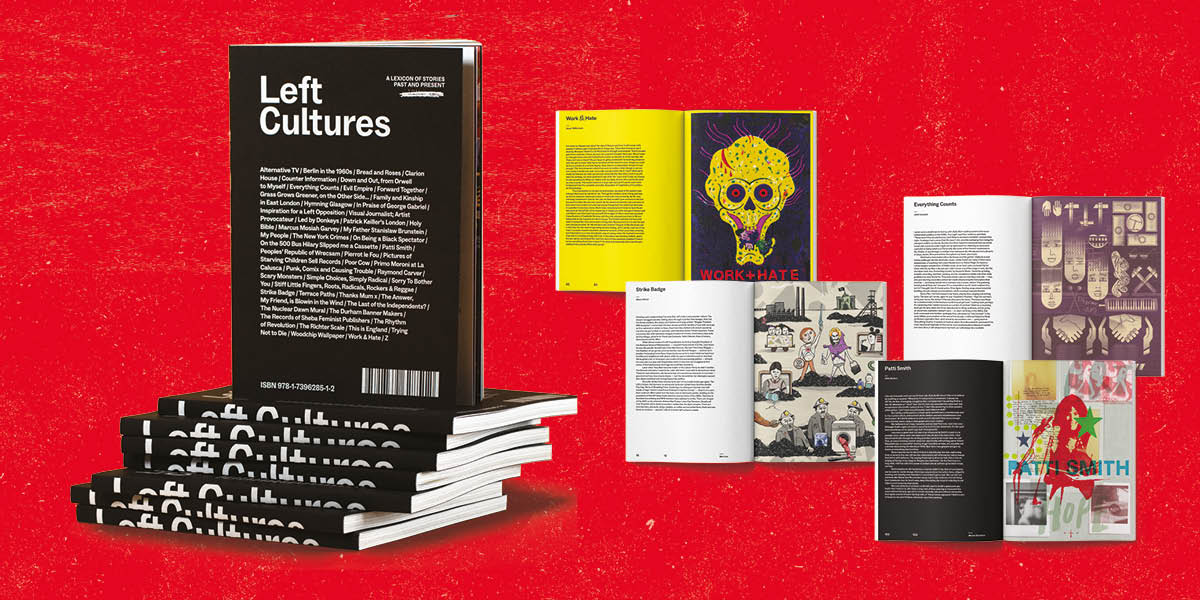Sipping my first post-lockdown pint with comrade Colum Leith in a sunny Bristol beer garden, we discussed what we had read, watched and listened to over previous months. Most of it spoke to our politics, so I flippantly suggested we make a publication celebrating left culture. Four years later and we are currently completing the fourth edition of Left Cultures.
Having worked as a print media illustrator for decades, a few dynamics have become very clear. First, mainstream editorial publications operate through a hierarchical system designed to control and limit published content. This includes some very good left-wing publications, a fact that has always surprised me. Second, editorial publishing is perceived to be only viable via wealthy owners or corporate advertisers. These facts create gatekeepers to our national discourse and political debate, usually leading towards right-wing viewpoints.
With Left Cultures, we’re asking: what would a publication crafted through a heterarchical system read and look like, and would it succeed? What if writers and artists were given freedom to compose and create as they wish – without the gatekeepers chipping off and smoothing the edges of content as it navigates upwards towards the editor’s office? Those processes squash the risk taking required for new (left) cultures to emerge. More importantly, they end up silencing marginalised and working-class voices.
Taking risks
Coming from image-making backgrounds, with no experience of editing text or working with writers, we felt a little nervous that no one would take us seriously. We wrote a loose brief and started reaching out to potential contributors. Comrades replied with enthusiasm.
We don’t ask contributors what they will write about beforehand and many are non-writers. When stories come in we are as surprised as our readers by what culture is discussed. The publication is a melting pot, packed full of real life stories across the left’s political spectrum. The design and artwork are equally important as the text; we want the whole publication to be fizzing with expressive and captivating images. We want readers to be twisted in one direction and, with the turn of a page, be pulled in another.
Using a heterarchical system allows fluidity of working towards creators’ needs through conversation and unpicking the best ways to support them and ignite their creativity. This is so rewarding and gets the best out of people, unlike the hierarchical system, which forces conformity. That said, we still have editorial red lines. One contributor accidentally said something slightly pleasant about Tony Blair – that was removed immediately.
Radical and gallery bookshops and indy mag stores have supported the project enthusiastically. Shop owners have told us it’s ‘refreshing’ – one said Left Cultures is his best-selling magazine, which is funny because it isn’t really a magazine in the traditional sense.
Culture on the left should be persuasive, exciting, challenging, educating, transformative and beautifully messy. As Mark Fisher wrote: ‘The tiniest event can tear a hole in the grey curtain of reaction which has marked the horizons of possibility under capitalist realism. From a situation in which nothing can happen, suddenly anything is possible again.’
With our fourth edition, we’ll have published over 200 stories and added hundreds of entries into our online lexicon of left culture, each creating tiny tears in the grey curtain. Soon the rips will start to appear.










